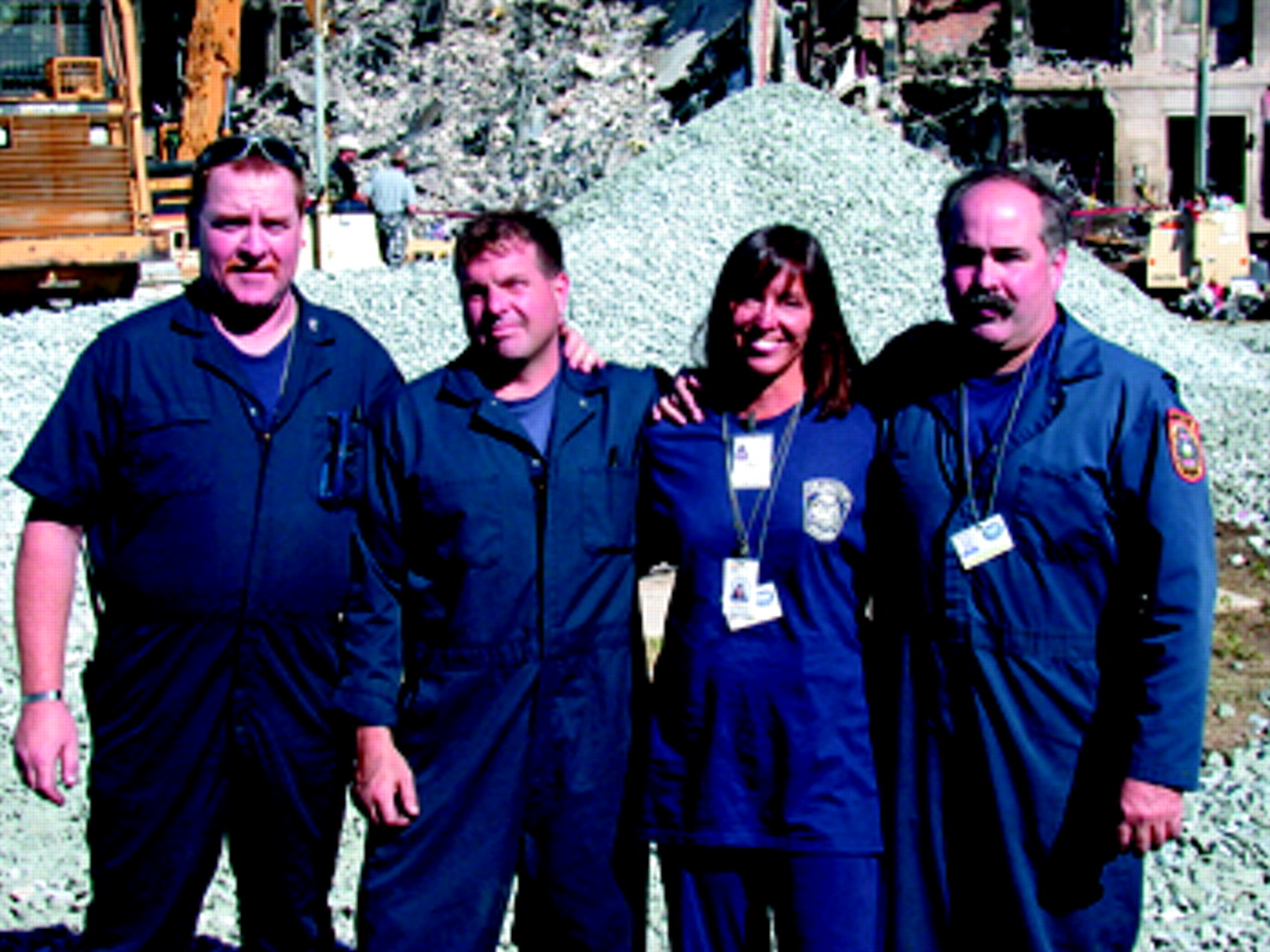Firefighters at Pentagon Supported by County EAP
Firefighters have become America’s new heroes. During the most frightening hours following the September 11 attacks, their courage and unity inspired the devastated nation and offered hope that normality would eventually return.
Another group of professionals also labored tirelessly to help maintain order in the face of devastation. Staff of the Employee Assistance Program (EAP) of Arlington County in Virginia were at the Pentagon working with Arlington County fire and rescue personnel from September 11 through September 21, when control of the site was transferred from the Arlington County Fire Department to the FBI. (The Pentagon is located in Arlington, Va., not in Washington, D.C., as many believe.)

Dodie Gill, director of the Arlington County Employee Assistance Program in Virginia, poses with (from left) firefighters Charles Kramaric, Scott Shifflitt, and William Veith at the Pentagon.
Firefighters, who kept in touch with their families with donated cell phones, sometimes would hand the receiver to an EAP staff member who would advise a worried spouse about how to talk to a crying child or to handle his or her own anxiety.
Gill remembered, “At one point, I was on the phone with the wife of a New York firefighter who is also the sister-in-law of an Arlington County firefighter. We discussed ideas about how to honor the firefighters who had died in New York City.”
Psychiatrists and mental health professionals recognize the need to use nontraditional methods to reach groups, such as firefighters and police, which have strongly developed and insular codes of values. Jim Schwartz, deputy chief of operations of the Arlington County Fire Department, agreed with this assessment. “We don’t trust outsiders easily,” he said.
Schwartz, who was a leader of the fire and rescue effort at the Pentagon, however, was quick to praise Gill and her staff. “Her work was outstanding,” he said. “She showed up and ‘scanned’ our workforce. The men trusted her because of the relationships she and her staff had developed with them over a period of time. Dodie, in turn, could tell who needed help and what kind of help to offer.”
That help took a variety of forms. For example, Gill arranged for a massage therapist to help relieve the physical aches and stress of the fatigued workers on site and prevent future injury. She also brought the county’s risk manager to the scene so that he could understand the risk the workers were under and expedite any future claims for workers’ compensation.
Gill’s quick response on September 11 had its roots in a decision in the late 1970s to establish an internal EAP in the Arlington County school system. About four years ago, county officials asked Gill to head up an internal EAP that would serve other employees of the county government, as well as employees of the school system. Currently, the EAP employs seven full-time and three part-time staff members. Gill has developed a network of psychiatrists and mental health professionals to whom she refers employees who need more sustained treatment than the EAP staff can provide.
Gill said, “Our staff became part of the fire department’s Peer Support Team to provide critical incident stress management [CISM]. We met monthly to build our team, provide education, and practice mock debriefings to keep our skills honed. In the last year, Captain Bob Gray, a coordinator of the peer team, and I provided four hours of training to all fire department personnel on CISM, PTSD, and related subjects as a way to ‘immunize’ them, in the case of disaster.
Gill said, “If operated correctly, an internal EAP enjoys longevity of relationships and an intimate knowledge of the work environment. As a result, trust grows within the organization. Our services are not limited by contract language or number of sessions. We are able to see patterns of behavioral risk and to intervene when appropriate. The value of that structure paid off in a very dramatic way at the Pentagon.” ▪



